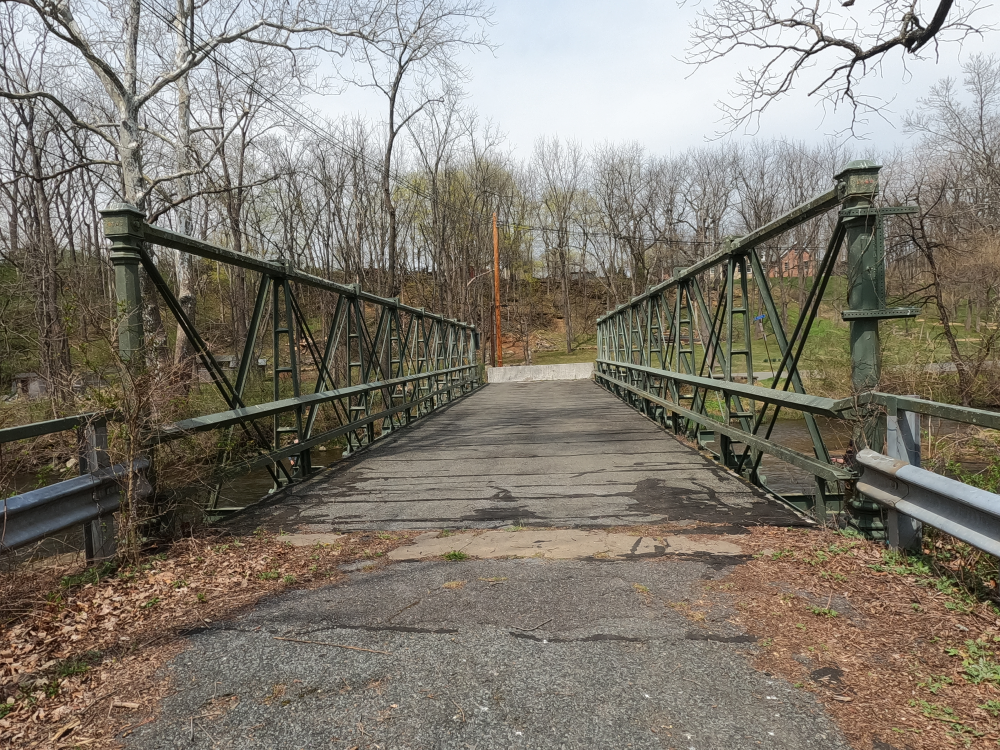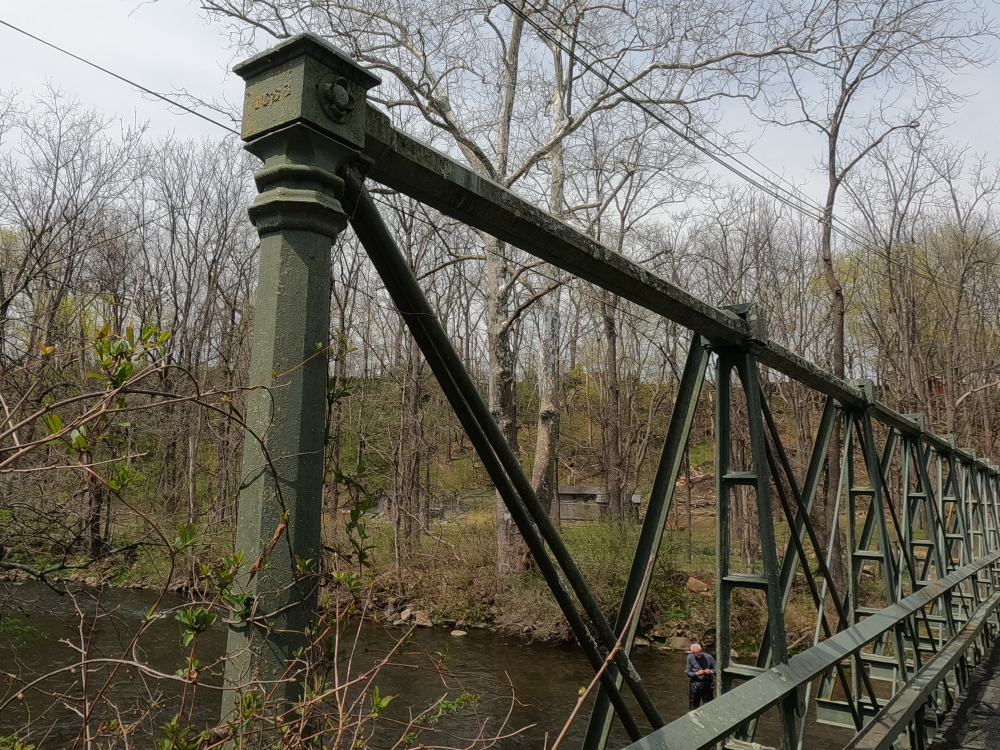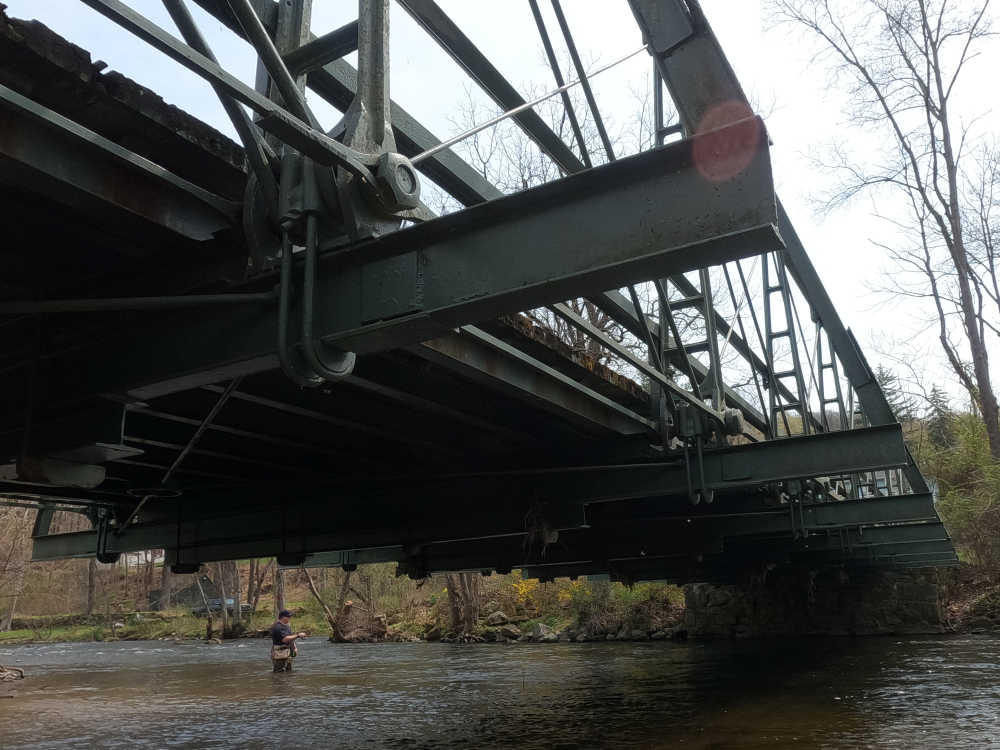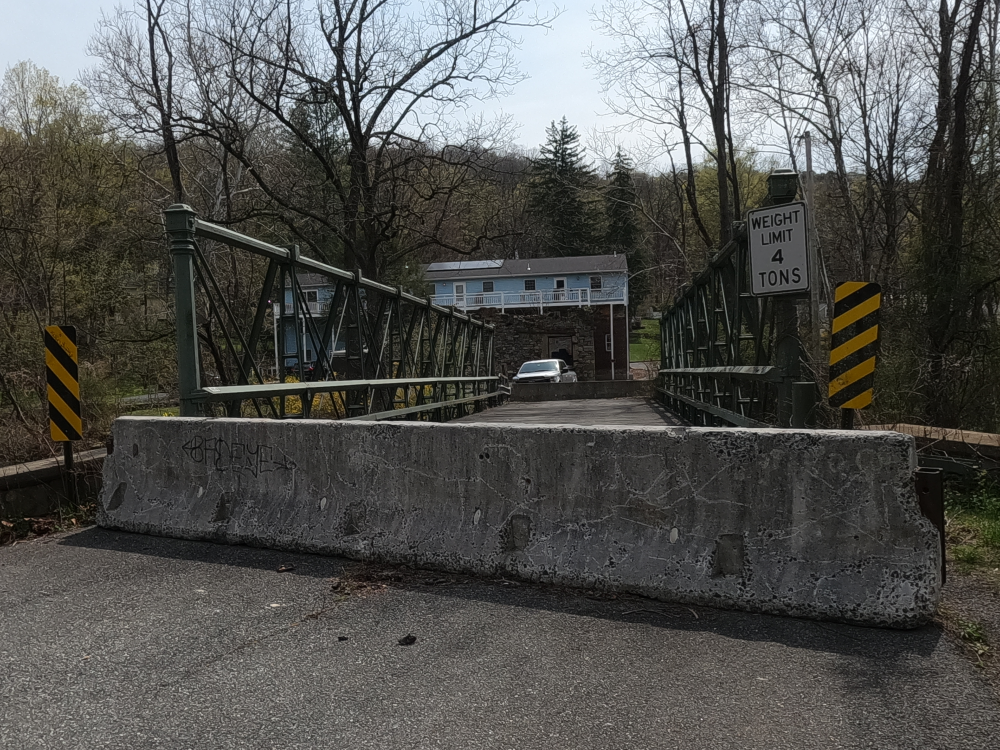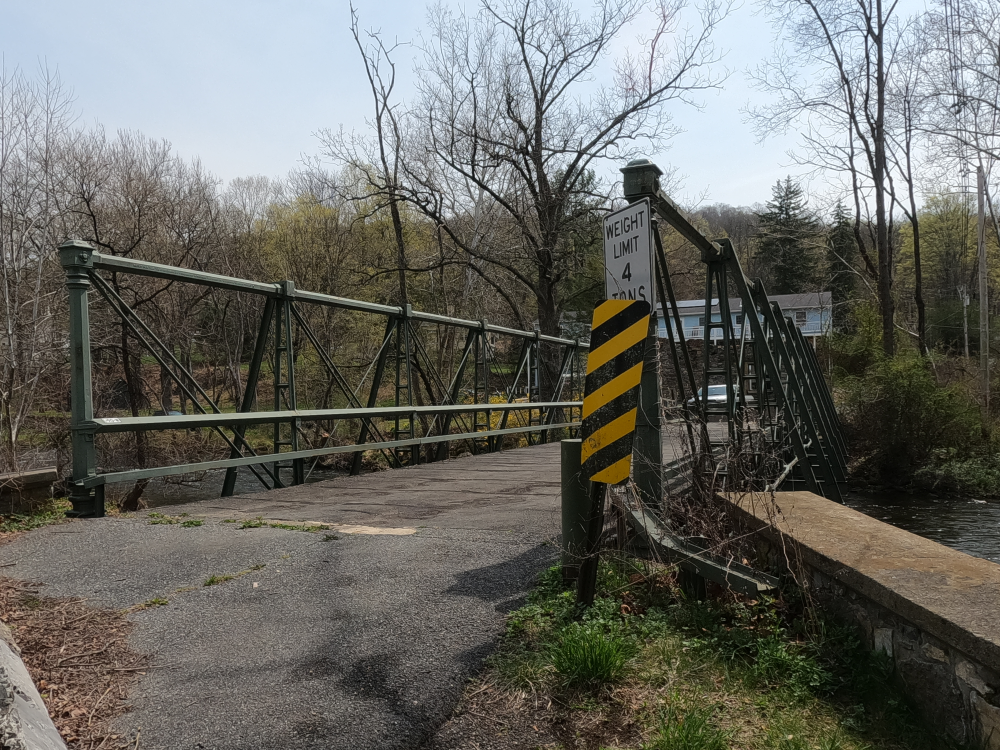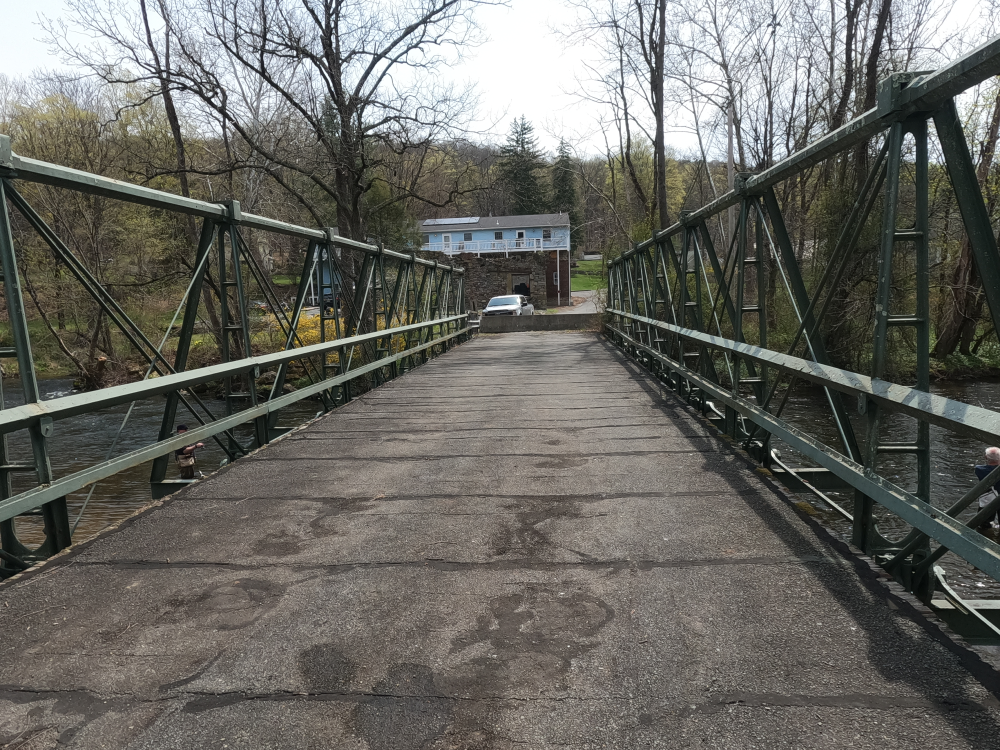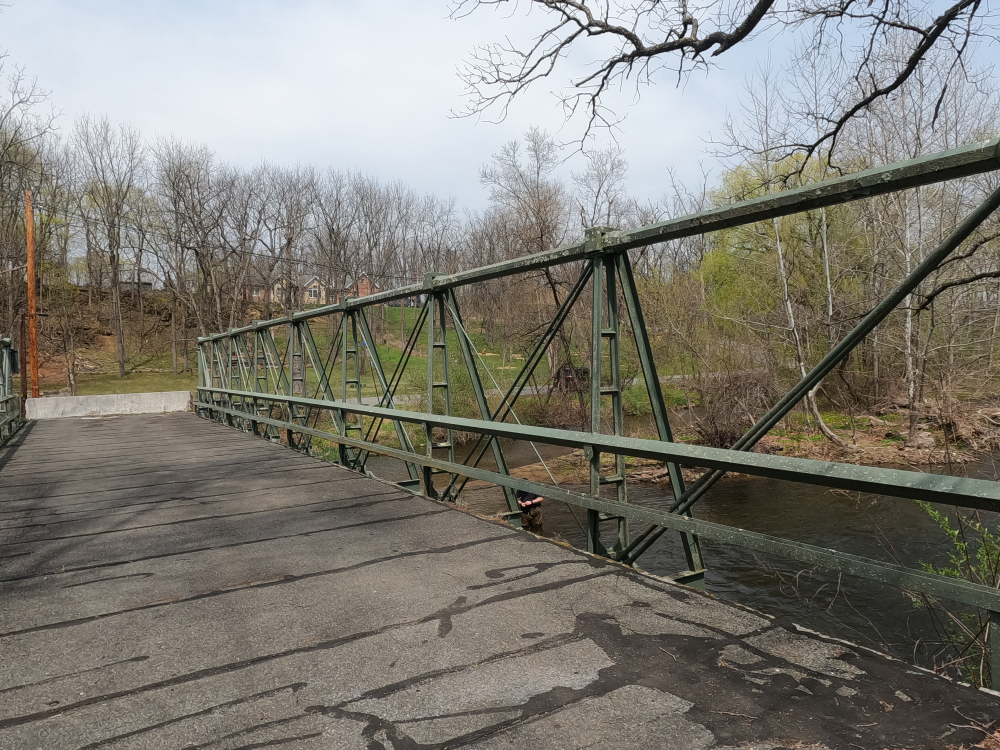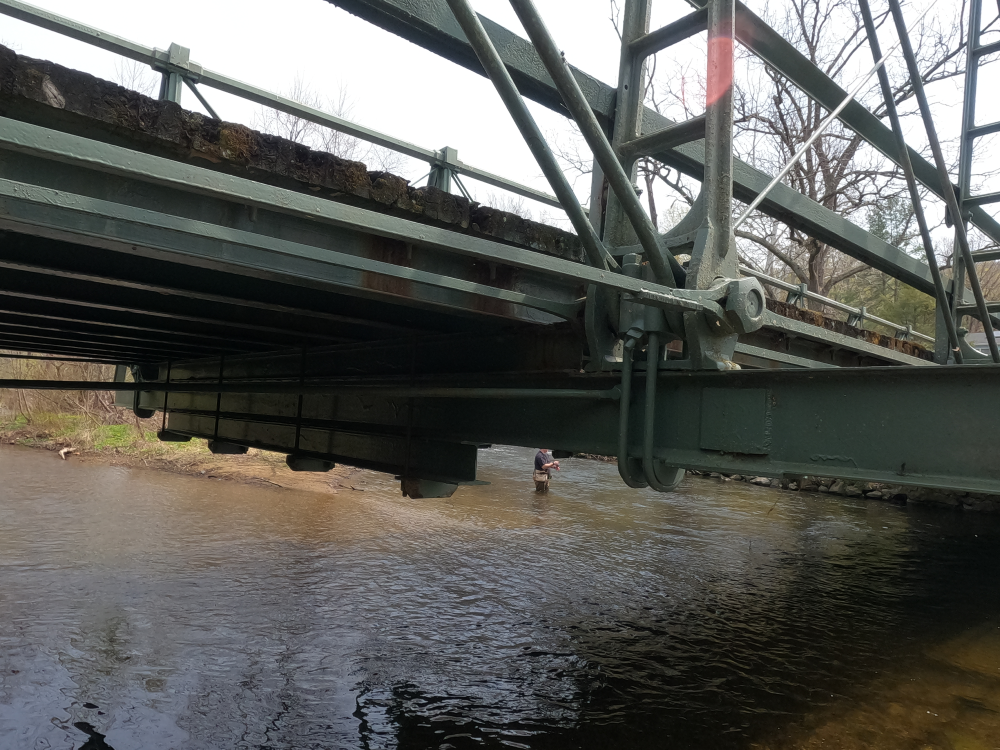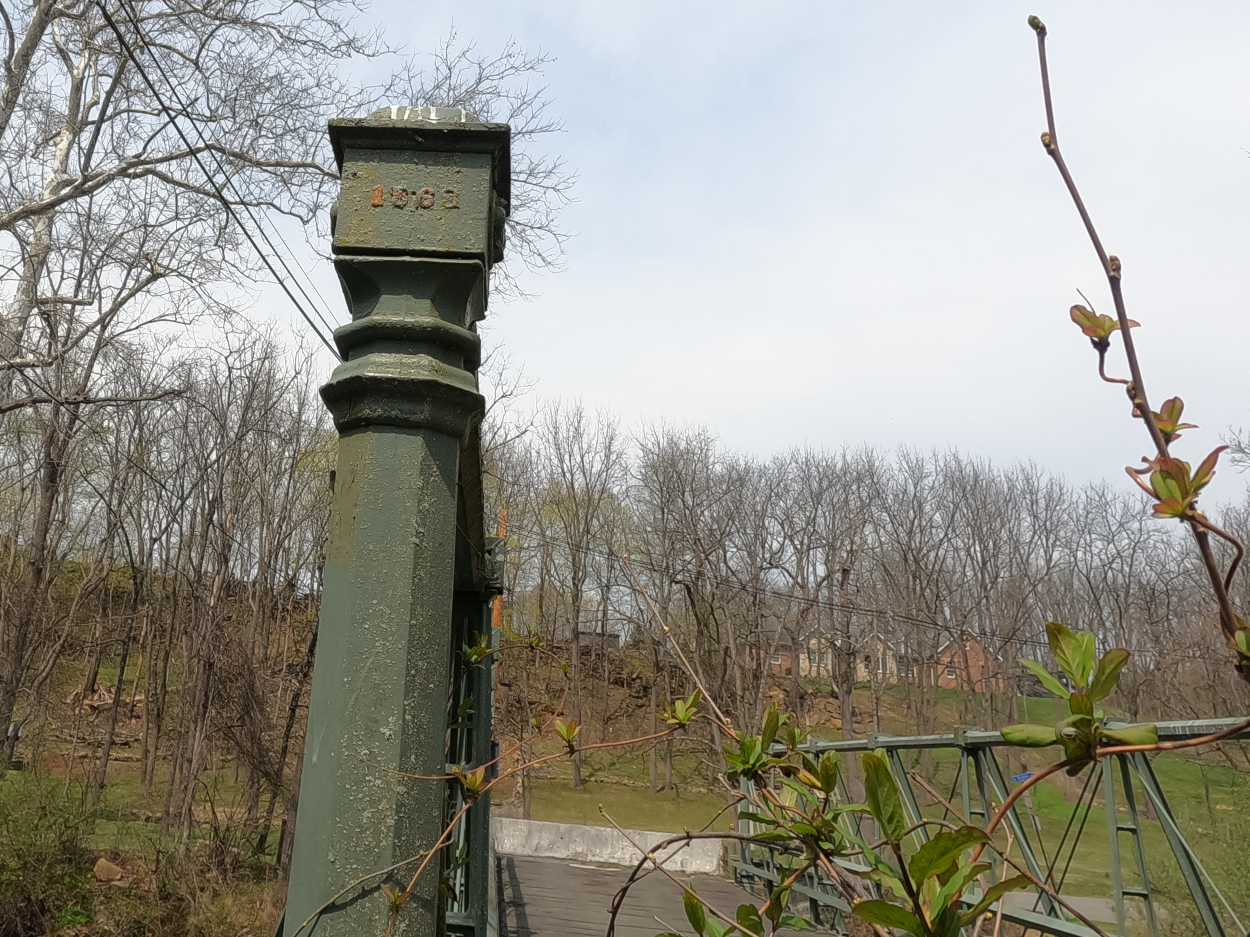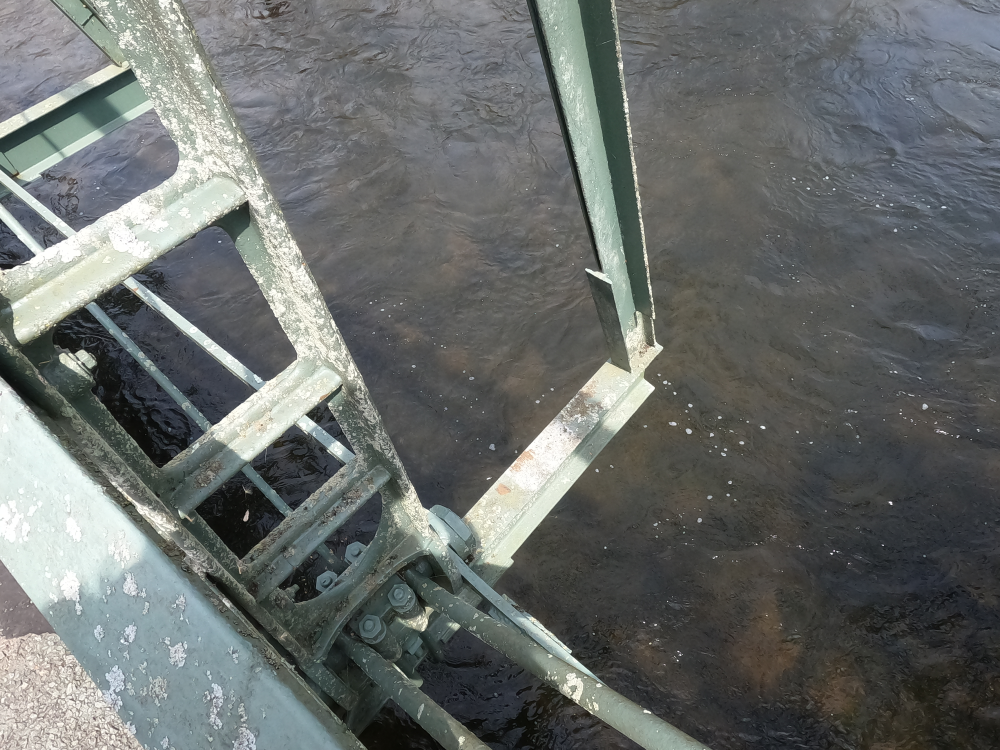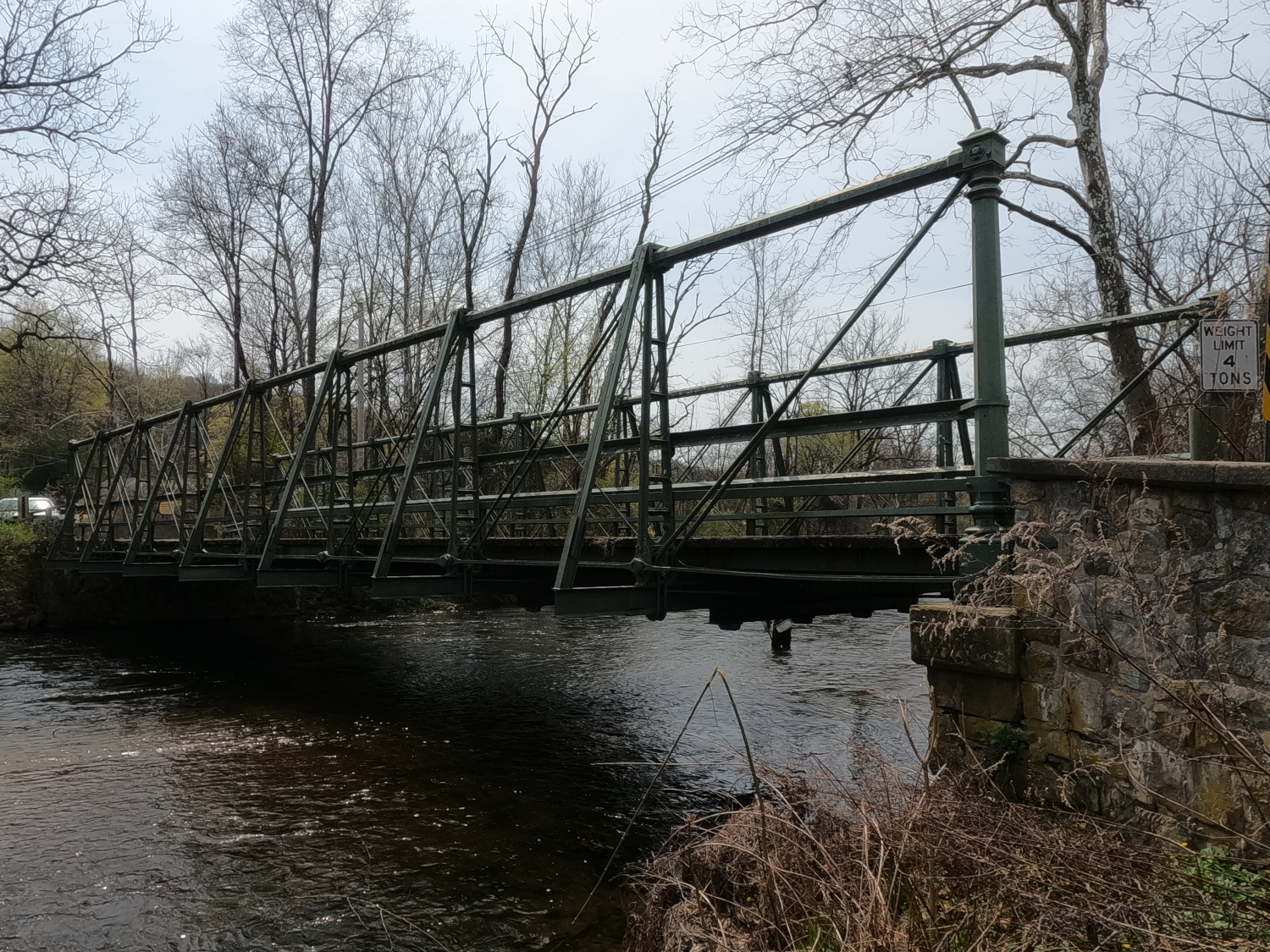
New Hampton Bridge
NBI Information
Location
State: New Jersey
County: Hunterdon County
Feature Carried: Rymon Street
Feature Crossed: Musconetcong River
Latitude, Longitude: 40.7206,-74.9637
Toll: On free road
Maintenance Responsibility: County Highway Agency
Structure Open, Posted, or Closed to Traffic: Bridge closed to all traffic
History
Year Built: 1868
Historical Significance: Bridge is on the National Register of Historic Places.
Year Reconstructed: 1991
Picture Date: April 19, 2025
Geometry
Lanes on Structure: 1
Lanes under Structure: 0
Skew: 0 degrees
Number of Main Spans: 1
Main Structure Type: Truss - Thru
Main Structure Material: Aluminum, Wrought Iron, or Cast Iron
Number of Approach Spans: None
Approach Structure Type: None
Approach Structure Material: None
Condition
Inspection Date: April 2023
Deck Condition: Satisfactory
Superstructure Condition: Imminent Failure
Substructure Condition: Fair
Channel Condition: Satisfactory
Culvert: Not Applicable
NBI Year: 2024
Bridge Information
The New Hampton Bridge is historic Pratt pony truss. It is one of the few early examples of iron Pratt truss bridges remaining in the United States and is among the oldest truss bridges in the country. There are two other similar bridges in New Jersey (the Glen Gardner Bridge and the Main Street Bridge), but this bridge is the oldest of the three. This bridge does show some visible alterations including added outriggers with clamps on the top chord, but overall, it retains excellent historic integrity.
This bridge is also a rare example of a composite cast iron and wrought iron bridge. It utilizes cast iron for the compression members and chords and wrought iron for the tension members. This gives the bridge a complex appearance, but in reality, it is a simple pin-connected Pratt pony truss with vertical members. However, the detail and design were done in a way to architecturally embellish the bridge. In fact, no additional decorations or embellishments were added apart from the bridge’s structural components. This was possible because cast iron allowed the fabrication to shape the beams in any way they desired. This was unachievable with the wrought iron and steel beams that were used in later bridges. This is particularly evident on the top chord of the bridge, where the builder inscriptions were cast in instead of using a separate bridge plaque. Unfortunately, these inscriptions are hard to read due to the many coats of paint.
The unique architectural embellishments on this bridge include square vertical iron end posts and hollow octagonal iron top tube. These elements are protected by a steel guiderail that was added at some point. The roadway was replaced with a modern asphalt and metal plank deck in 1966. One of the north end posts suffered severe impact damage in 1991, but it was repaired and preserved the original structure of the bridge.
The bridge was closed in April of 2022 due to damage caused by an overweight vehicle. There are plans to repair and reopen it, although a timeline has not been set. Hopefully the repairs will be done in a way that maintains the historic integrity.
References

